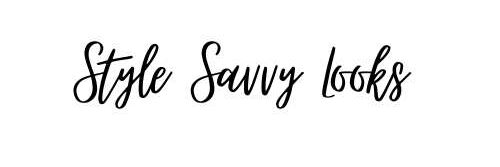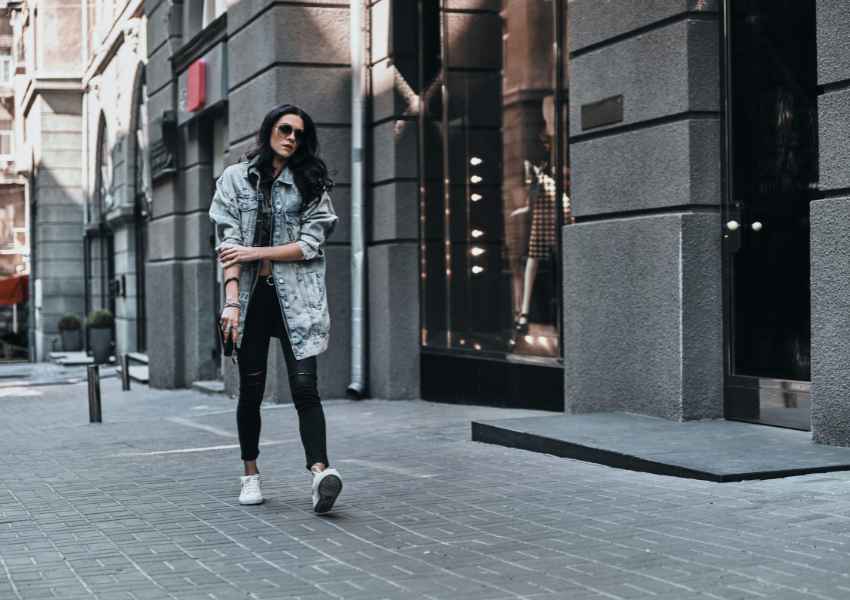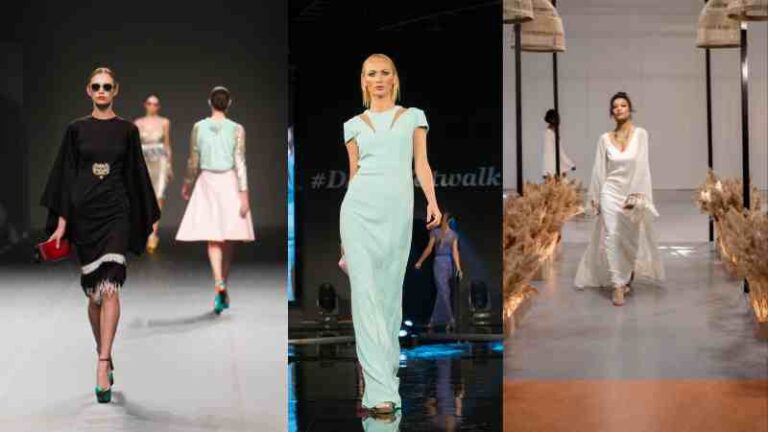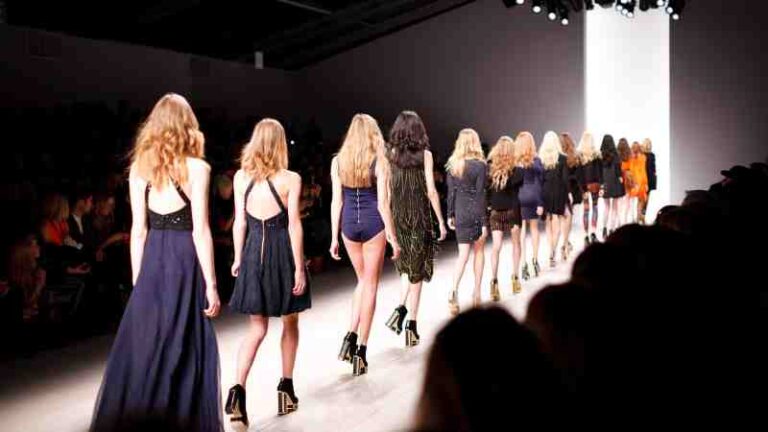Minimalist fashion is a design approach characterized by simplicity, functionality, and a focus on essential elements. It emphasizes that “less is more,” encouraging individuals to strip away excess and embrace a refined, uncomplicated aesthetic.
The roots of minimalist fashion trace back to the mid-20th century, with influential designers like Coco Chanel and the Bauhaus movement laying the groundwork. The 1960s and 1970s witnessed the emergence of minimalist design in response to the luxury of preceding decades, further solidifying its place in the fashion landscape.
In recent years, minimalist fashion has experienced a significant surge in popularity. The fast-paced nature of the fashion industry, coupled with a growing awareness of sustainability, has led individuals to embrace the timeless elegance and versatility of minimalist style. Influencers and designers are championing the movement, making it a formidable force in contemporary fashion.

Core Principles of Minimalist Fashion-Simplicity in Design
Clean lines and shapes
Minimalist fashion revolves around clean, uncluttered lines and simple geometric shapes. The absence of unnecessary embellishments highlights the beauty of fundamental design elements, creating a timeless and sophisticated look.
Limited Color Palette
A key aspect of minimalist fashion is a restrained color palette. Neutral tones such as whites, blacks, grays, and earthy hues dominate, allowing for easy coordination and a cohesive wardrobe. This simplicity in color adds to the aesthetic appeal and promotes versatility in styling.
Functionality and Practicality
Versatility in Wardrobe
Minimalist wardrobes are curated with pieces that seamlessly complement each other. The emphasis is on creating a capsule collection of versatile items that can be mixed and matched, offering many outfit possibilities without overwhelming clothing items.
Emphasis on Quality over Quantity
Minimalist fashion encourages a shift from Quantity to quality. Investing in well-crafted, durable pieces reduces the need for constant replacements and aligns with sustainable and ethical practices. Quality over Quantity also contributes to a more intentional and mindful approach to consumption.
The Minimalist Wardrobe-Capsule Wardrobe Concept
Definition and Origins
The capsule wardrobe concept is a cornerstone of minimalist fashion, defined by a curated collection of essential and timeless pieces that can be mixed and matched to create a variety of outfits. The term was coined in the 1970s by Susie Faux, a London boutique owner, and gained traction through Donna Karan’s introduction of her “Seven Easy Pieces” collection in the 1980s. The capsule wardrobe promotes intentional and mindful clothing choices, focusing on quality rather than Quantity.
Building a minimalist wardrobe involves selecting versatile pieces that stand the test of time. Key items include:
- White Button-Up Shirt: Versatile for both casual and formal occasions
- Classic Trench Coat: Timeless outerwear suitable for various seasons.
- High-Quality Denim: A well-fitted pair that can be dressed up or down.
- Black Dress: A simple, elegant dress suitable for multiple events.
- Neutral-Colored Sweater: A staple for warmth and style.
- Tailored Blazer: Adds sophistication to any outfit.
- Comfortable White Sneakers: Versatile footwear for a casual and chic look.

Sustainable and Ethical Practices
Environmental Impact of Fast Fashion
The conventional fashion industry’s fast-paced production and consumption contribute significantly to environmental degradation. From excessive water usage to textile waste, the impacts are far-reaching. With its focus on longevity and versatility, the minimalist wardrobe stands in stark contrast to the fast-fashion model, encouraging a shift towards sustainability.
Embracing Slow Fashion and Ethical Brands
Slow fashion encourages a more deliberate approach to clothing production and consumption. Individuals can contribute to a healthier and more responsible fashion ecosystem by supporting ethical and sustainable brands. Ethical brands often prioritize fair labor practices, use eco-friendly materials, and promote transparency in their supply chains. Embracing these values aligns with the principles of minimalist fashion, fostering a connection between style and social responsibility.
Minimalism Beyond Clothing-Minimalist Accessories
In minimalist fashion, accessories play a crucial role in elevating a look without compromising the core principles of simplicity. Key accessories include:
- Classic Watch: A timeless piece that adds sophistication to any outfit.
- Minimalist Jewelry: Delicate pieces that enhance rather than overpower the overall look.
- Structured Handbag: A versatile, neutral-colored handbag that complements various outfits.
- Quality Sunglasses: Functional and stylish, providing a finishing touch to any ensemble.
- Scarves or Bandanas: Simple accessories that add flair and versatility to an outfit.
The essence of minimalist accessories lies in their ability to make a statement without overwhelming the overall aesthetic. Choosing pieces with clean lines and neutral tones ensures they seamlessly integrate into a minimalist wardrobe.
Choosing Accessories with Purpose
A fundamental principle of minimalist fashion is intentional choice, which extends to accessories. Each accessory should serve a purpose and contribute to the overall cohesiveness of the wardrobe. By opting for versatile pieces that can be styled in multiple ways, individuals can maximize the impact of their accessories while minimizing clutter.
Minimalist Beauty and Grooming-Simple and Timeless Beauty Routines
Minimalism transcends clothing and extends to beauty and grooming practices. A minimalist approach to beauty emphasizes simplicity and timelessness. This can be achieved through:
- Natural Makeup: Focusing on enhancing natural features rather than heavy application
- Effortless Hairstyles: Embracing hairstyles that require minimal styling and maintenance.
- Skincare Overload: Prioritizing a few high-quality skincare products over an extensive routine.
A minimalist beauty routine saves time and aligns with the broader philosophy of embracing one’s authentic self.
Embracing Natural Beauty
Minimalist beauty embraces the idea that true beauty comes from confidence and self-acceptance. This involves embracing natural features, imperfections, and individuality. By promoting a positive self-image, minimalist beauty aligns with the broader principles of minimalist fashion, encouraging a shift away from societal norms and unrealistic beauty standards.
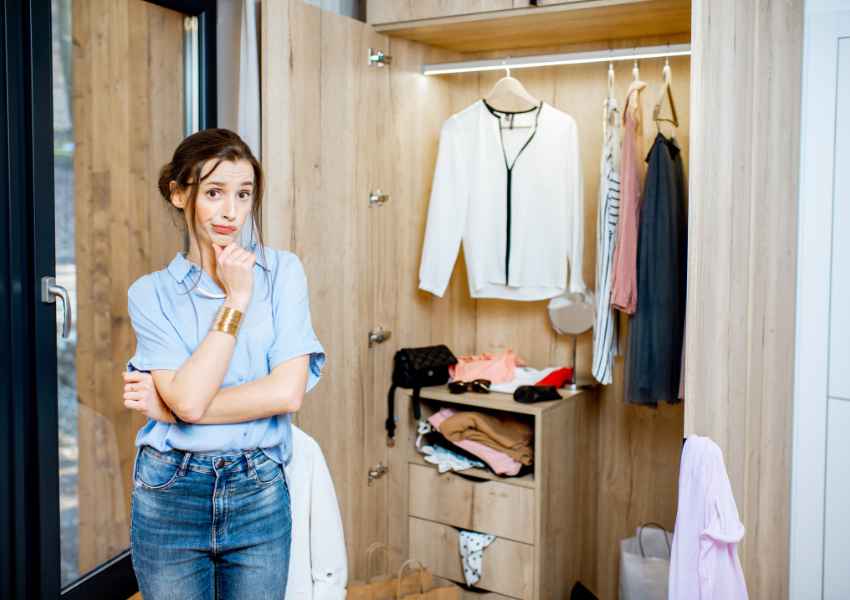
Minimalist fashion icons-Influential Figures in Minimalist Fashion
Designers
Calvin Klein: Renowned for his clean lines and minimalist aesthetic, Calvin Klein has been a trailblazer in fashion. His designs often feature simple silhouettes and a focus on quality materials, embodying the essence of minimalist fashion.
Phoebe Philo: As the former creative director of Céline, Phoebe Philo is celebrated for her minimalist approach to design. Her work is characterized by timeless pieces that prioritize functionality and elegance.
Jil Sander: Often referred to as the “Queen of Less,” Jil Sander is a German fashion designer known for her minimalist designs. Her creations emphasize precision, purity, and a restrained color palette.
Celebrities and Influencers
Emma Watson: The actress and activist Emma Watson is known for her commitment to sustainable and minimalist fashion. Her red carpet choices often feature classic, elegant pieces that make a statement without excess.
Ryan Gosling: A male fashion icon, Ryan Gosling embraces minimalist style with well-tailored suits, simple color choices, and a focus on classic menswear staples.
Marie Kondo: While primarily known for her expertise in decluttering and organization, Marie Kondo’s style also reflects minimalist principles. Her wardrobe consists of carefully selected, versatile pieces that spark joy.
Challenges and Misconceptions
Minimalism is boring.
One common misconception is that minimalist fashion is dull or lacks creativity. In reality, minimalist style celebrates simplicity and finding beauty in clean lines and thoughtful design. It’s a form of self-expression that goes beyond flashy trends.
Minimalism is expensive.
Another misconception is that adopting a minimalist wardrobe requires expensive, high-end pieces. While quality is emphasized, minimalism encourages mindful consumption, and affordable, sustainable options are readily available.
Overcoming Challenges in Adopting a Minimalist Wardrobe
Mindful editing
One challenge is parting with non-essential items. Overcoming this involves a mindful editing process, focusing on keeping items that align with one’s style and serve a purpose.
Resisting Trends
Minimalist fashion isn’t immune to trends, and resisting the pressure to update the wardrobe constantly is essential. By embracing a timeless aesthetic, individuals can build a wardrobe that stands the test of time, reducing the urge to follow fleeting trends.
Embracing Minimalism in Everyday Life
Minimalism extends beyond clothing and into various aspects of daily life. Applying minimalist principles involves simplifying and decluttering in areas such as home decor, technology, and even daily routines. This can be achieved through:
- Decluttering Spaces: Removing unnecessary items and keeping only those that serve a purpose or bring joy
- Digital Detox: Streamlining digital spaces by organizing files, unsubscribing from unnecessary emails, and reducing screen time.
- Intentional Living: Making mindful choices in all aspects of life, from relationships to daily activities, focusing on what truly adds value.

Mindful Consumption and Consumerism
Embracing minimalism in everyday life also involves a shift in mindset towards mindful consumption. This includes:
- Quality over Quantity: choosing items based on quality and longevity rather than succumbing to the allure of cheap, disposable products.
- Avoiding Impulse Buys: Taking a thoughtful approach to purchases and avoiding impulsive spending on items that do not align with one’s needs or values.
- Environmental Considerations: Consider the environmental impact of products and opt for sustainable and eco-friendly alternatives when possible.
By incorporating minimalist principles into daily life, individuals can experience a sense of clarity, reduced stress, and a greater appreciation for the things that truly matter.
Minimalist Fashion in Different Cultures
Minimalist fashion has transcended cultural boundaries and gained global recognition. Its emphasis on simplicity and functionality resonates with individuals worldwide. Key factors contributing to its global impact include:
- Universal Appeal: The simplicity of minimalist fashion makes it universally accessible and adaptable to various cultural aesthetics.
- Sustainability Focus: The global push towards sustainable and ethical fashion aligns seamlessly with the principles of minimalism.
- Influence of Designers: International designers who champion minimalist aesthetics have significantly promoted the style on a global scale.
Cultural Influences on Minimalist Style
While minimalist fashion has a universal appeal, different cultures infuse unique elements into this aesthetic. For example:
- Japanese Minimalism: Influenced by Zen philosophy, Japanese minimalism emphasizes clean lines, neutral colors, and a focus on craftsmanship.
- Scandinavian Minimalism: Known for its simplicity and functionality, It often incorporates natural elements and a sense of hygiene (coziness).
- French Effortlessness: French minimalism embraces the “effortless chic” aesthetic, characterized by a mix of classic pieces and casual elegance.
Minimalism and Personal Expression
Contrary to the belief that minimalist fashion restricts personal expression, it offers a unique canvas for individuals to showcase their identity. Finding individuality in minimalist fashion involves:
- Curating a Signature Look: Selecting key pieces that resonate with personal style and can be consistently incorporated into outfits
- Creative Pairing: Experimenting with combinations of minimalist items to create unique and unexpected ensembles.
- Statement Accessories: Using minimalist accessories strategically adds a personal touch and makes a subtle statement.
How Minimalism Enhances Personal Style
Minimalism enhances personal style by fostering a deeper connection with one’s wardrobe. This is achieved through:
- Clarity of Style: Understanding personal preferences and refining one’s style to focus on what truly aligns with individual taste
- Effortless Coordination: Building a wardrobe of cohesive pieces allows for effortless coordination, making it easier to express oneself daily.
- Confidence in Choices: Minimalism encourages intentional decision-making, leading to greater trust in style choices and a sense of authenticity.
Trends and Innovations in Minimalist Design
Minimalist fashion continues to evolve, embracing new trends and innovations while staying true to its core principles. Trends in minimalist design include:
- Sustainable Materials: A growing emphasis on eco-friendly and cruelty-free materials
- Inclusive Sizing: A shift towards inclusivity, ensuring minimalist fashion is accessible to individuals of all body types.
- Digital Fashion: Exploring minimalist aesthetics in the virtual realm, with a rise in digital fashion and NFT (non-fungible token) clothing.
Continued Impact on the Fashion Industry
Minimalist fashion’s impact on the industry is expected to persist, influencing consumer behavior and industry practices. Key impacts include:
- Sustainability as Standard: Increased adoption of sustainable and ethical practices as the norm within the fashion industry
- Consumer Demand for Quality: A shift towards consumer demand for quality over Quantity, influencing production and retail strategies.
- Digital Transformation: Integrating minimalist principles into e-commerce experiences and virtual fashion shows.
Conclusion
In summary, minimalist fashion is not just a style choice but a lifestyle beyond clothing. Key takeaways include:
- Simplicity is Key: Minimalist fashion is centered around simplicity, clean lines, and purposeful design.
- Versatility Matters: A minimalist wardrobe emphasizes versatility, allowing for more with less.
- Cultural Adaptability: Minimalist fashion transcends cultural boundaries, adapting and influencing styles worldwide.
As we navigate an ever-evolving fashion landscape, exploring minimalist fashion offers a timeless and sustainable approach to personal style. It’s an invitation to declutter, simplify, and discover a wardrobe that reflects individuality and contributes to a more conscious and intentional way of living. Embrace the philosophy that less is more, and in doing so, discover the beauty of a minimalist lifestyle.
